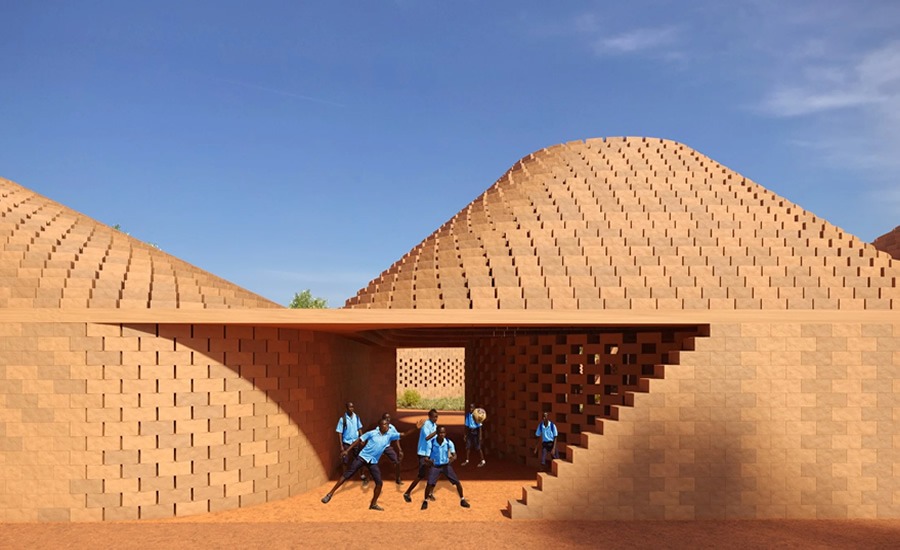
In the heart of Kafountine, in the south of Senegal, an idea has been born that unites tradition and the avant-garde: an educational centre designed with earth and water as protagonists. The project, promoted by Jeanne Schultz Design Studio and architect Adeyemo Shokunbi, seeks to transform the way of building in West Africa.
The proposal proposes classrooms open to the environment, built with compacted earth blocks extracted directly from the site. This resource not only reduces costs, but also ensures interior coolness in the face of high temperatures. Each module is articulated around courtyards, conceived as spaces for meeting and community respite.
Water plays an essential role in the design of the complex. A system of rain and fog collection, combined with irrigation channels and a well, will enable a self-sufficient circuit to be maintained. The life of the school is organised around this water core, with rest and learning areas linked to nature.
Beyond the classrooms, the project includes administrative spaces, basic services and multi-purpose areas that will be able to host cultural and social activities. The central square, dedicated to water as an element of collective memory, is intended as a meeting point for the whole village.
Although still at a conceptual stage, the initiative aims to serve as an example of how local architecture can respond to global challenges such as climate change, resource scarcity and the need for accessible education. In Kafountine, mud and water become foundations for the future.
Source: jeanneschultz.com; muddarchitects.com
